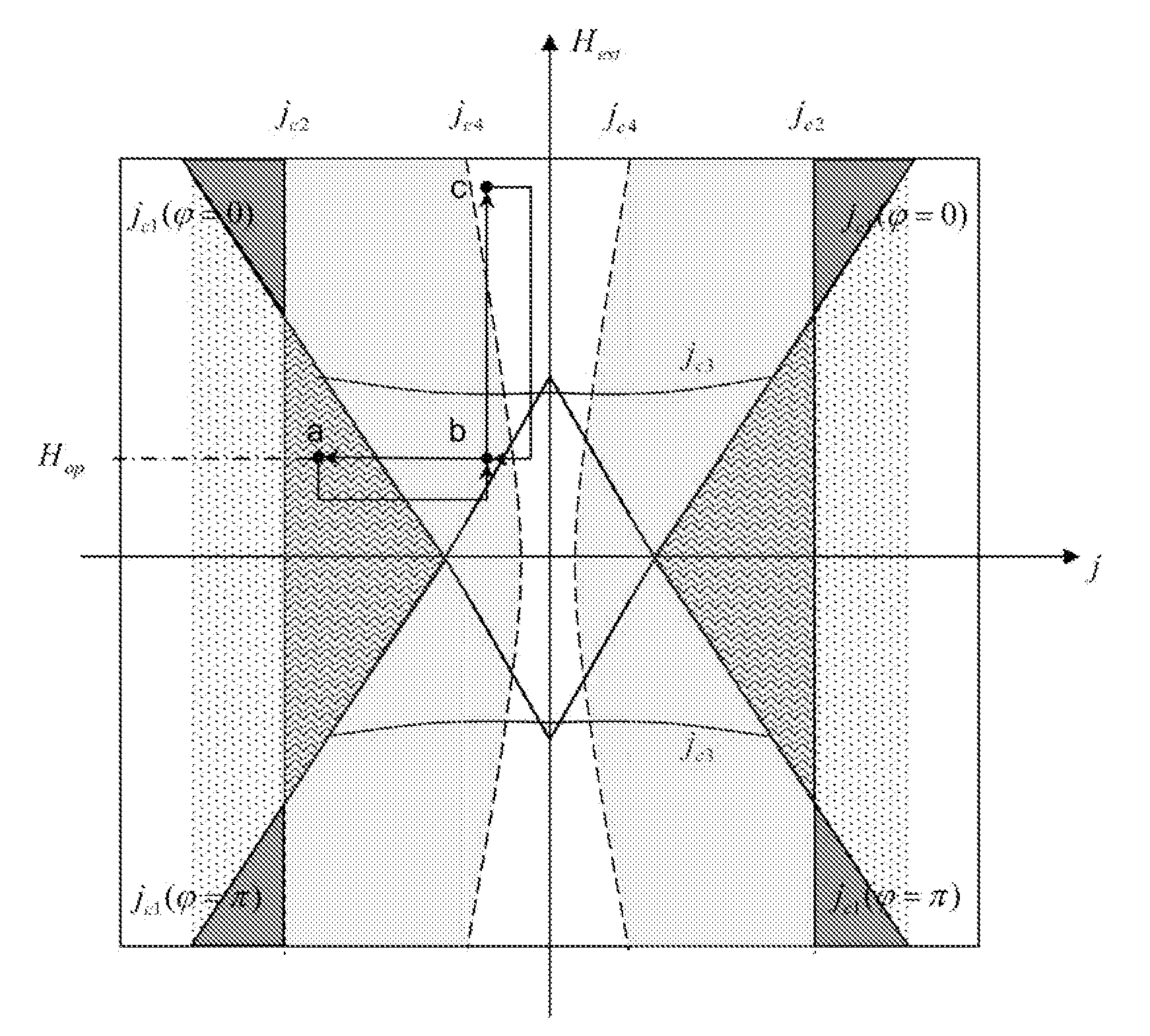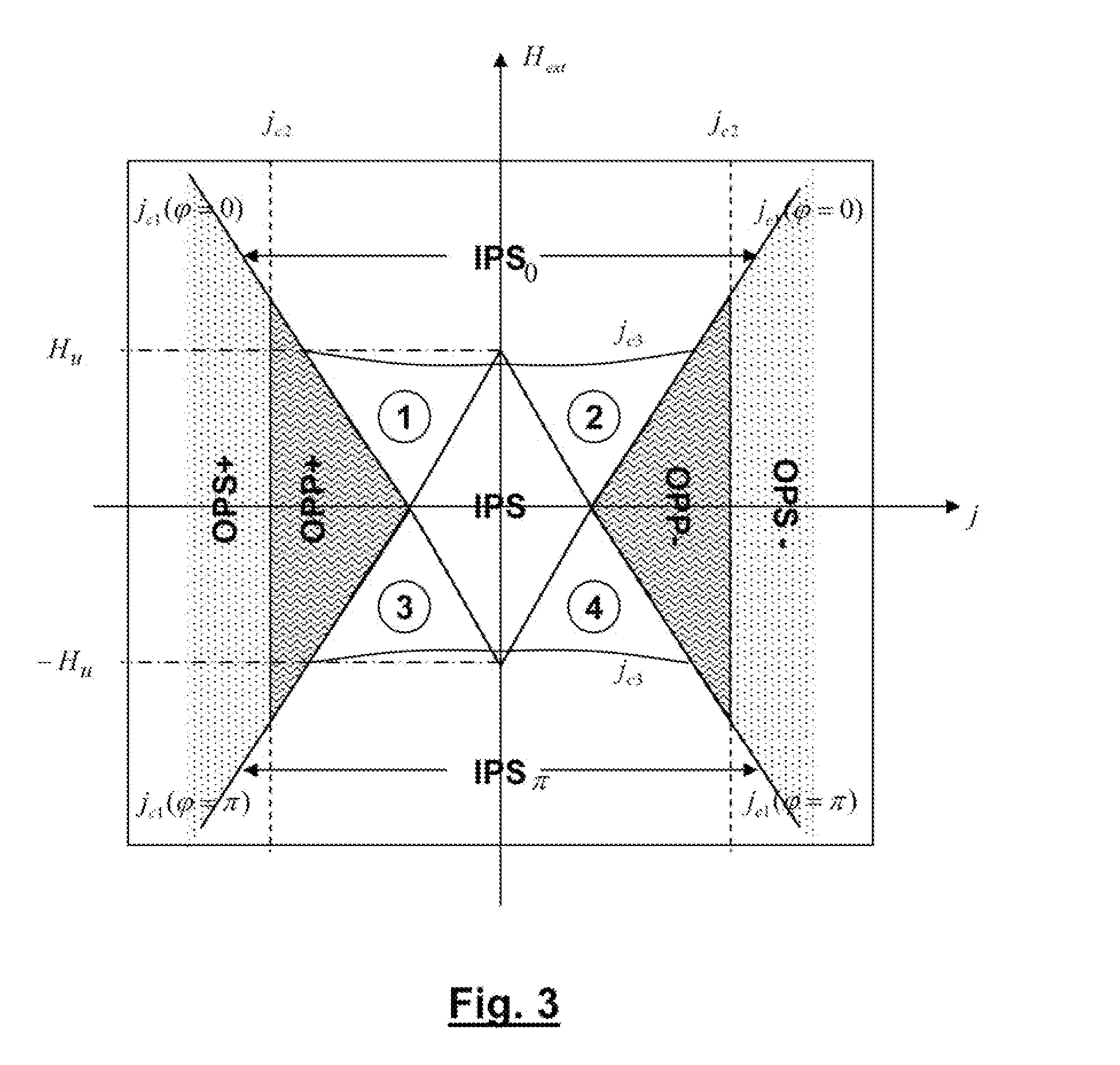Spin-transfer torque oscillator
a torque oscillator and spin-transfer technology, applied in the direction of pulse automatic control, magnetic bodies, masers, etc., can solve the problems of large current density required for obtaining and sustaining voltage oscillations, damage to the structure, and the magnetization vector of the original axis to precess about the original axis
- Summary
- Abstract
- Description
- Claims
- Application Information
AI Technical Summary
Problems solved by technology
Method used
Image
Examples
first embodiment
[0073]It will therefore be understood that, according to the invention, the spin-transfer torque structure can be operated as an oscillator at low current density by:[0074]setting the operating point of the spin-transfer structure in a region of bistability where the magnetization vector of the free layer can be either in a stable static state or a stable precessing state e.g. (state (a));[0075]increasing the current density in absolute values until it crosses a first threshold value (|jc1(Hop)|), thereby inducing a precession of the magnetization vector of the free layer (state (b);[0076]decreasing the current density in absolute values until it crosses back said first threshold value, the magnetizing vector of the free layer being thereby kept in said precessing state.
[0077]For switching off the oscillator, the current density is decreased in absolute values until a second threshold value is crossed (|jc4(Hop)|), i.e. the operating point is moved out of the first region of bistabi...
second embodiment
[0079]FIG. 5 illustrates a method for operating the spin-transfer structure as an oscillator, according to the invention.
[0080]This figure shows an example of operation cycle a→b→a→c→a performed at a constant current density value jop.
[0081]The starting state (a) is assumed static. This means, as for the first embodiment, that it lies either in the IPS region or in one of the regions (1)-(2) where the initial angle of the magnetization vector was φ=0 or in one of the regions (3)-(4) where the initial angle of the magnetization vector was φ=π. In the present instance, (a) lies in region (2) with φ=0 but the other cases may equally be considered.
[0082]The external magnetic field is decreased until it crosses a threshold value Hdown such that |jop|>|jc1(Hdown)| at which precession starts and the structure consequently generates an oscillating voltage. In the present instance, the operating point is moved to state (b) in region (4). Since the initial angle of the magnetization vector wa...
third embodiment
[0090]FIGS. 6 illustrates a method for operating the spin-transfer structure as an oscillator, according to the invention. In this embodiment, the spin torque oscillator is switched on by applying a current pulse of given polarity and switched off by applying an external magnetic field pulse of a given polarity.
[0091]More specifically FIG. 6 shows an operating cycle a→b→a→c→a in which the switching on half-cycle a→b→a is identical to a switching on half-cycle a→b→a of the first embodiment whereas the switching off half-cycle a→c→a is identical to a switching off half-cycle of the second embodiment.
PUM
 Login to View More
Login to View More Abstract
Description
Claims
Application Information
 Login to View More
Login to View More - R&D
- Intellectual Property
- Life Sciences
- Materials
- Tech Scout
- Unparalleled Data Quality
- Higher Quality Content
- 60% Fewer Hallucinations
Browse by: Latest US Patents, China's latest patents, Technical Efficacy Thesaurus, Application Domain, Technology Topic, Popular Technical Reports.
© 2025 PatSnap. All rights reserved.Legal|Privacy policy|Modern Slavery Act Transparency Statement|Sitemap|About US| Contact US: help@patsnap.com



